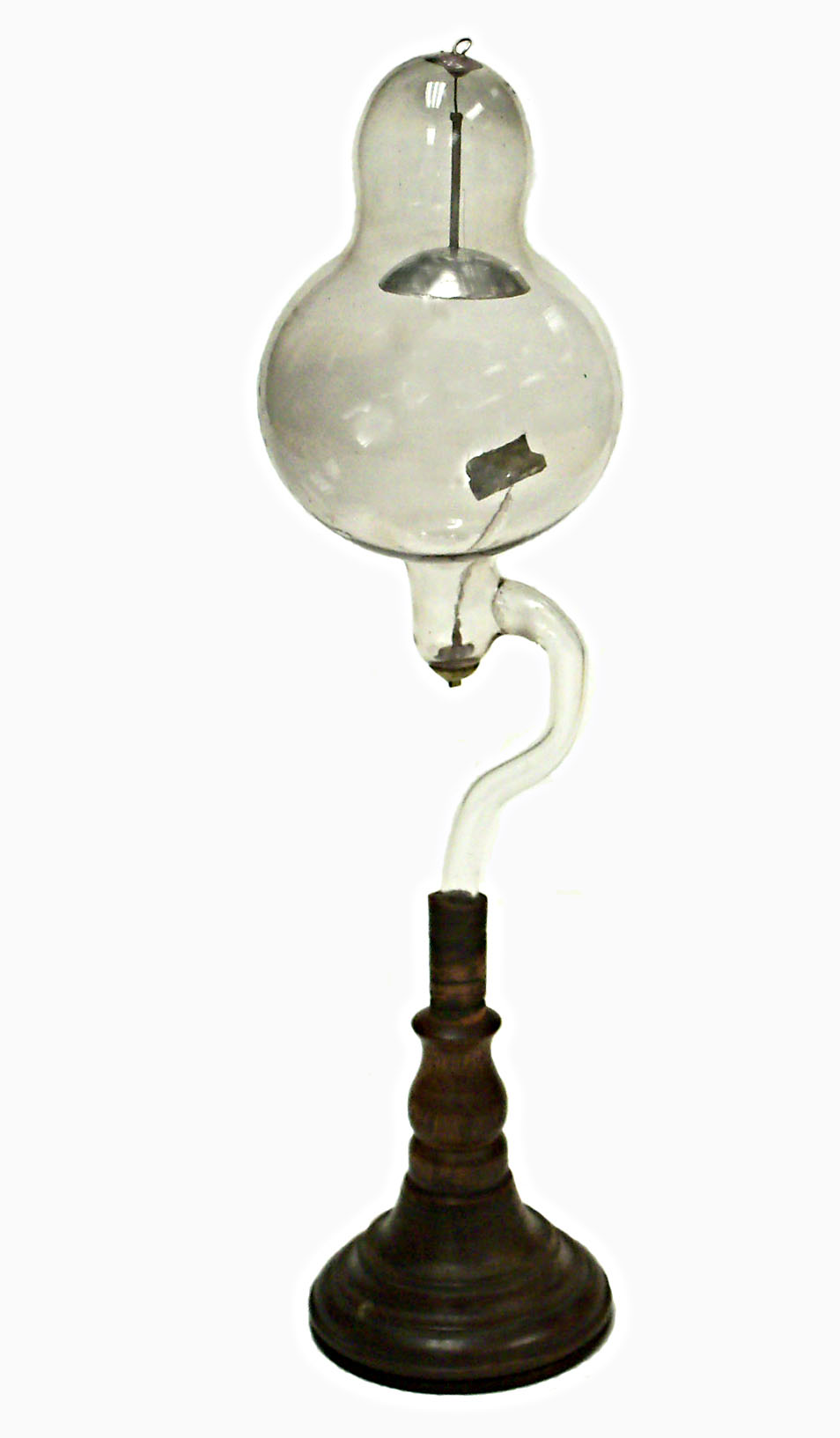Jackson X-Ray Tube (ca. 1896)

Following Rontgen's discovery of X-rays in late 1895, the first significant development in the design of X-ray tubes was the use of a concave cathode that focused the electrons (cathode rays) on the target. William Crookes had constructed such a tube many years earlier, but not, of course, to increase the production of X-rays. Various workers (e.g., Sidney Rowland and Herbert Schallenberger) made X-ray tubes with concave cathodes in early 1896, but rightly or wrongly, professor Herbert Jackson of Kings College in London is usually credited as being the first to do so.
As seen in this example, the Jackson tube was usually oriented so that the cupped cathode faced down while the upwardly facing target (typically platinum) was mounted at 45 degrees to the tube axis.
It is not visible in the photo, but the glass stem supporting the anode is cracked, probably because of a drop during shipping. As a result, the cathode and anode don't line up correctly.
Size: ca. 11" high (including stand) and 3" diameter
Kindly donated by the Health Physics Society.
References
- Belcher, R. and Belcher, E. The Rays. Williams & Wilkins. 1969.
- Kaye, G.W.C. X Rays. Longmans, Green & Co. 1929.
